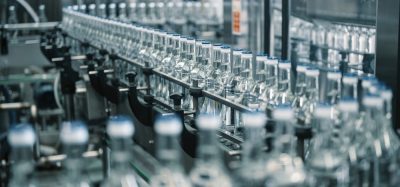Mapping food microbiomes: how a new database could enhance food safety and quality
Posted: 2 September 2024 | Ben Cornwell | No comments yet
Researchers have unveiled a new database mapping the microbiomes of over 2,500 foods, revealing crucial insights into food safety, quality, and potential health impacts.


Microbes play an integral part of the food we consume, but until now our understanding of their role in our diets and their influence on the human microbiome has been limited. A pioneering study has mapped the microbiomes of 2,533 different foods, uncovering nearly 11,000 food-associated microbes, half of which were previously unknown species. This extensive research, published in the journal Cell on 29 August, has created a database that is now available as an open-access resource.
“This is the largest survey of microbes in food,” explains Nicola Segata, co-senior author and computational microbiologist from the University of Trento and the European Institute of Oncology in Milan. “We can now start to use this reference to better understand how the quality, conservation, safety, and other characteristics of food are linked with the microbes they contain.”
Utilising DNA sequencing technologies
Traditionally, food microbiology has relied on culturing microbes individually in the lab, a method that is both slow and limited in scope. To overcome these challenges, the research team employed metagenomics, a cutting-edge molecular technique that sequences all the genetic material in a food sample simultaneously.
This approach, commonly used to study the human microbiome and environmental samples, had not been applied to food on such a large scale before.
Paul Cotter, co-senior author and microbiologist from Teagasc, APC Microbiome Ireland, and VistaMilk Ireland, notes, “Food microbiologists have been studying foods and testing for food safety for well over a hundred years now, but we’ve underutilised modern DNA sequencing technologies. This is the starting point for a new wave of studies in the field where we make full use of the molecular technology available.”
The research covered a diverse range of foods from 50 countries, with 65 percent of the metagenomes coming from dairy products, 17 percent from fermented beverages, and five percent from fermented meats. The analysis identified 10,899 microbes, including 1,036 bacterial and 108 fungal species. Notably, similar foods tended to harbour similar microbes, though dairy products showed greater microbial diversity, likely due to the variety of dairy items studied.
Interestingly, while the researchers did not find many pathogenic bacteria, they identified microbes that could affect food flavour or preservation. This knowledge could be invaluable to food producers aiming to create consistent and high-quality products.
“One thing that was striking is that some microbes are present and performing similar functions in even quite different foods,” Segata comments. “This is important because it could further improve the idea of the specificity and the quality of local foods, and we could even use metagenomics to authenticate foods coming from a given facility or location.”
Implications for human health
Beyond food production, this research has significant implications for human health. The team found that food-associated microbes account for about three percent of the adult gut microbiome and a striking 56 percent of the infant gut microbiome. This finding suggests that we may directly acquire some gut microbes from food, which could potentially influence our health.
“It might seem like only a small percentage, but that three percent can be extremely relevant for their function within our body. With this database, we can start surveying at a large scale how the microbial properties of food could impact our health,” Segata said.
This study is part of the MASTER EU consortium, an EU-funded initiative that aims to characterise the presence and function of microbes throughout the entire food chain.
As Cotter concludes, “In the future, we want to explore the diversity of these food microbiomes with respect to different foods, cultures, lifestyles, and populations.”
Related topics
Data & Automation, Food Safety, Research & development, Technology & Innovation, The consumer
Related organisations
APC Microbiome Ireland, European Institute of Oncology, MASTER EU consortium, Teagasc, University of Trento, VistaMilk Ireland
Related regions
Africa, Asia Pacific & Oceania, Central and South America, Central and South Asia, Europe, Middle East, North America, UK & Ireland









